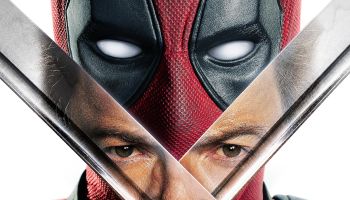Despite its proximity to the nation’s capital in Washington, D.C., Baltimore, Maryland has been the center of economic despair and urban blight since riots rolled through the city a day after Dr. Martin Luther King Jr. was assassinated in 1968.
So great are the problems in modern-day Baltimore, that the city’s Black Police Commissioner Anthony Batts said in March that issues essentially “go back in time,” according to The New York Daily News.
Batts’ comment came even before rioters took to the streets after the funeral of Freddie Gray, 25, who died last week after his spinal cord mysteriously snapped and broke while he was in police custody.
The New York Daily News reports:
“When I go to Baltimore, on the East Coast, I’m dealing with 1950s-level black-and-white racism,” Police Commissioner Anthony Batts said, according to the Sun. “It’s taken a step back. Everything’s either black or everything’s white, and we’re dealing with that as a community.”
The racial tension has created a troubled history between the police force and its residents. Since 2011, some 100 people won lawsuits after alleging excessive force, payouts that totaled nearly $6 million, a 2014 investigation by The Baltimore Sun found.
The investigation prompted Batts and Mayor Stephanie Rawlings-Blake to urge the Justice Department to open a probe into the police department in October 2014. Among the incidents under review were the deaths of Athony Anderson Sr., who died in police custody in September 2012, and Tyrone West, who died during a struggle with police in July 2013.
Here is a timeline of events and statistics leading up to Monday’s riots:
- Baltimore erupted in riots a day after the assassination of the Rev. Martin Luther King Jr., who was shot and killed in Memphis, Tennessee on April 4, 1968. With much of the city destroyed, Whites, as well as a number of middle-class Blacks, moved to the suburbs, precipitating urban decay that still exists today.
- Stephanie Rawlings-Blake, who is Black, was sworn in as Baltimore’s 49th mayor in February 2010 in what was intended to be a great transition for the city. In November 2011, she was elected to her first full term with 87 percent of the vote and the unemployment rate was 19.01 percent for West Baltimore, where fires raged on Monday night.
- The crime-ridden city is famously featured in HBO’s popular hit The Wire, which premiered in 2002 and ran through 2008.
- Baltimore had the fifth-highest murder rate in the country in 2013 among cities with 100,000 or more people and saw an increase in property crime, according to statistics released by the FBI.
- The city’s high school graduation rate is atrocious. Less than 60 percent of the city’s high school students graduate from high school, the Maryland Equity Project (pdf) said in January.
- Before Obamacare kicked in, residents lacked access to mental health and health care treatment. Forbes says: “Black infants in Baltimore are almost nine times more likely to die before age 1 than White infants. AIDS cases are nearly five times more common in the African-American community.” Further, a study by Johns Hopkins Bloomberg School of Public Health found that youths in the most troubled neighborhoods of Baltimore reported some of the worst conditions compared to youth in Johannesburg, New Delhi, Shanghai and Ibadan, Nigeria, according to International Business Times.
- Baltimore City had one of the highest unemployment rates in the nation in February 2015 at 8.4 percent compared to 5.8 percent in the nation, according to the S. Bureau of Labor Statistics.
- Most African-Americans in the city live in economic despair, The Baltimore Sun said in March. The city is 63 percent Black and 24 percent of residents live below the poverty line, paper says.
- Freddie Gray, 25, is laid to rest on Monday, April 27. He died on April, 19, a week after his spine was mysteriously severed during an arrest on unspecified criminal charges.
- Riots, reminiscent of those in 1968, break out after protests over Gray’s death turn violent just hours after Gray’s funeral.
During a news conference Tuesday, city leaders called for calm, saying, “the city hasn’t seen this manner of violence since the King assassination riots that also ravaged the Shaw area in [Washington], D.C. and parts of Chicago along with other places across the nation,” reports NewsOne’s D.L. Chandler, who was on the scene Monday and Tuesday.
Indeed, we agree with President Barack Obama, who called for a lot of these social issues to be addressed not just in Baltimore, but also across the nation. The clock is ticking before more protests spring up in another city in America.
SOURCE: The New York Daily News, Forbes, International Business Times | VIDEO CREDIT: NDN
Baltimore: A Timeline That Proves The City’s Issues Run Deep was originally published on newsone.com
















